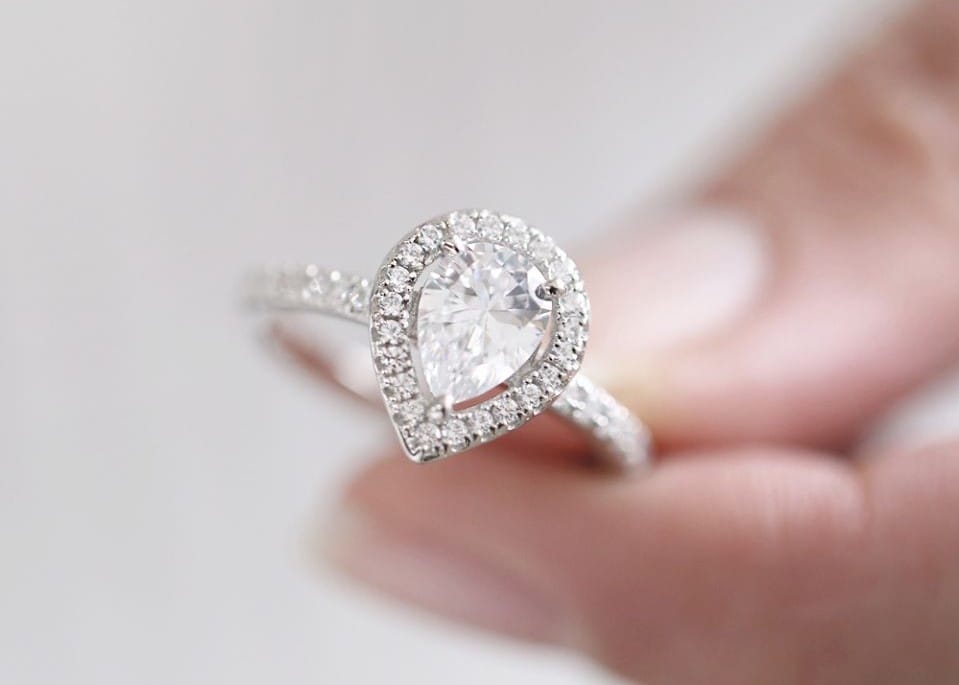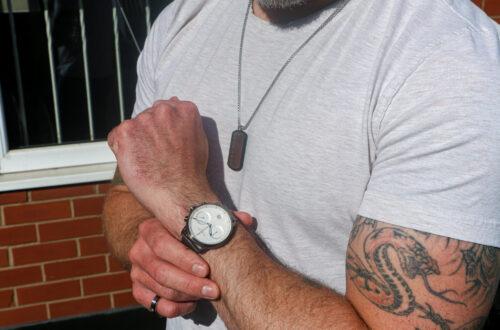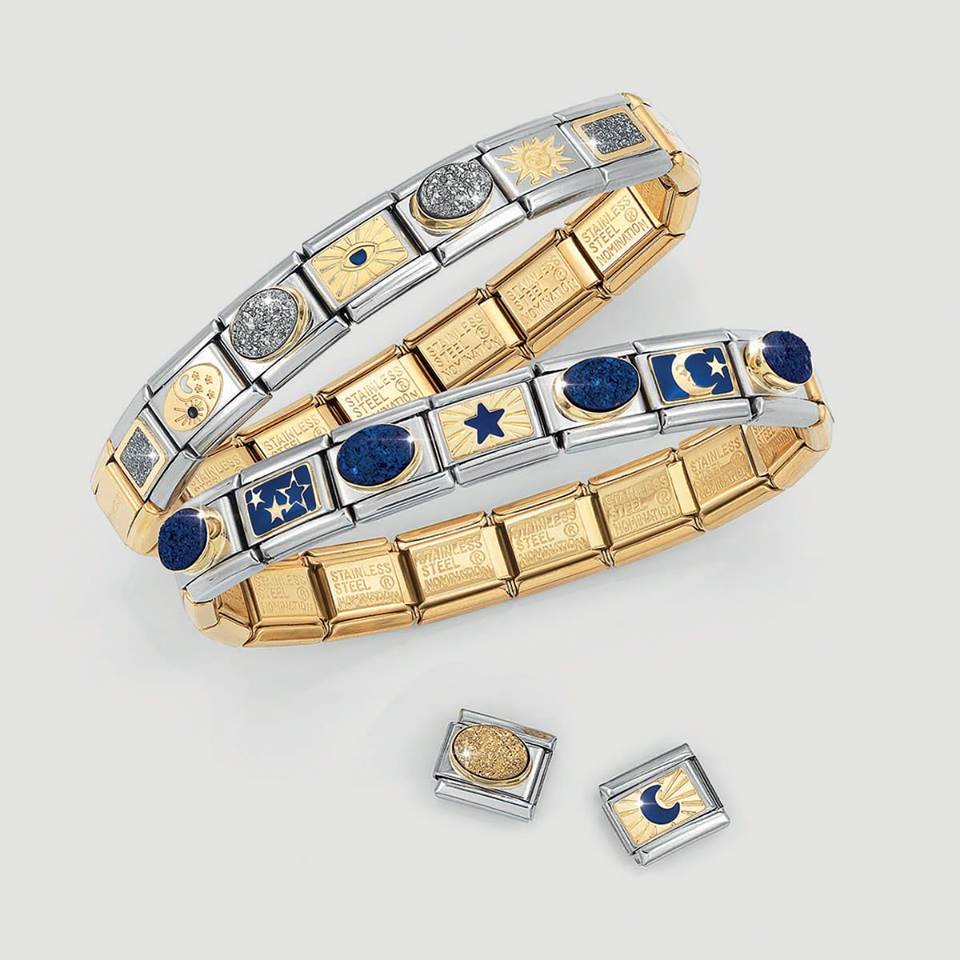Do you suffer from some form of jewellery allergy? Perhaps you’ve suddenly experienced red, itchy earlobes after wearing your favourite studs, or you’ve just never got on with any kind of metal jewellery. Don’t be alarmed – it’s more common than you might think!
According to surveys, approximately 20% of UK consumers suffer from allergic reactions caused by metal allergens, and will therefore avoid wearing jewellery altogether.
In this blog post, we’re going to cover the key facts surrounding jewellery allergies, including causes, symptoms and metals that you should most definitely avoid. We’ll also talk about jewellery that you can wear, and how to identify brands that should be safe even if you’ve suffered allergic reactions to jewellery in the past.
What causes a jewellery allergy?
Jewellery allergies can appear out of nowhere, even after years of wearing your engagement ring or favourite necklace. But why and how does this happen?
To put it very simply… The issue arises from repeated and prolonged exposure to certain metal allergens which are often found in jewellery, leading to a condition called “Allergic Contact Dermatitis” (ACD) or a “skin allergy”.
To add a little more detail… As the skin experiences repeated and prolonged contact with jewellery containing the metal allergen(s), it becomes sensitised, eventually leading to an immune response. Your immune system has recognised an allergen and attempts to defend itself by releasing histamine, resulting in inflammation of the skin known as ACD.
If you want to get a little more specific, allergic reactions to jewellery are actually an example of “metal-induced allergic contact dermatitis” (since the reaction is triggered by metal allergens).
All types of metal jewellery and accessories can cause ACD, but surveys across Europe have suggested that it is most common for people to become allergic to earrings. Some argue that the reason for this is that the metal actually goes through the skin, triggering a more severe response.

What metals cause jewellery allergies?
So we’ve established that metal allergens within jewellery are what cause the negative reaction. But which specific metals should you be looking out for?
Well, the bad news is that it’s technically possible to develop an allergy to any metal. There are numerous elements that dermatologists believe could act as allergens under certain circumstances.
The good news is that the majority of jewellery allergies come down to three metals: nickel, cobalt and chromium. It’s been estimated that around 10-15% of people are allergic to one or more of these metals, with nickel allergy being the most prominent.

You might be wondering, But I only wear good quality sterling silver jewellery? The problem is that most jewellery is made from alloys, which may contain small amounts of allergens such as nickel. 925 sterling silver, for example, is 92.5% pure silver alloyed with copper, but trace amounts of other metals may be introduced during the manufacturing process.
In other words, you’re almost definitely not allergic to silver, but rather the minute measures of metal allergens present in your jewellery.
Similarly, many people believe they have developed a stainless steel allergy after experiencing a negative reaction to their steel jewellery. Nickel-iron is used to manufacture stainless steel, and it’s basically impossible to leach out the metal allergen, meaning that most stainless steel alloys (even surgical stainless steel) contain 8-12% nickel. In other words, a nickel allergy is the most likely reason for an allergic reaction to stainless steel jewellery!
Note: Despite its nickel content, surgical stainless steel actually doesn’t cause a reaction in most people, even those with a nickel allergy. According to some, this is due to the fact that the nickel bonds to the other alloys present and therefore can’t impact the skin directly.
How do I know if I have a jewellery allergy?
As we mentioned earlier, an allergic reaction to jewellery presents as a form of dermatitis, which basically means inflammation of the skin. The reaction will usually be confined to the area of skin which has been in direct contact with jewellery, but in some cases, it can spread further.
Common symptoms of a metal or jewellery allergy include the following:
- Redness, rash and/or bumps
- Itching (varying from mild to severe)
- Dryness of skin
- In severe cases, fluid-filled blisters
Red and itchy earlobes are a tell-tale sign that you’re allergic to earrings, while rashes on the wrist and around the neck indicate a reaction to bracelets, watches and necklaces (worsened by the friction of your jewellery moving against the skin).
It’s important to note that symptoms will usually occur after just a few hours of wearing allergy-inducing jewellery, but sometimes it can take a few days. They can also last for several weeks in more severe cases.
What jewellery can I wear if I have a jewellery allergy?
Discovering that you have a jewellery allergy can be devastating, especially for those who have spent years curating their collection. For many people, jewellery is an integral part of their everyday style, so finding out that you can’t wear it anymore is a real disappointment!
However, all is not lost: there are still options available to people who suffer from allergies to nickel and other metals.
Mayo Clinic recommends that you look for jewellery made from materials such as surgical stainless steel, titanium and 18k gold. They also suggest that lower karat yellow gold and sterling silver should be safe to wear, as long as they are “nickel-free”.

Above all, it’s vital to avoid jewellery that contains triggering metal allergens; if you suffer from a nickel allergy, that means avoiding any products that contain nickel.
But how can you be sure that the jewellery you buy is free of irritants? Fortunately, the development of advanced testing methods means that there are now ways to ascertain whether or not a piece of jewellery will contain metal allergens. One example of this is AnchorCert Protect.
AnchorCert Protect & ChloBo
In a previous blog post about ChloBo jewellery, we briefly touched on the AnchorCert Protect test, but what does this actually do?
Basically, AnchorCert Protect is a novel testing method that identifies and measures the levels of metal allergens such as nickel in precious metals. Once these have been pinpointed, the manufacturing process is then managed to ensure that the finished jewellery will not cause an allergic reaction.
In other words, even if you suffer from a known jewellery allergy, an accessory approved by AnchorCert Protect is highly unlikely to cause any adverse skin reaction.
The best news of all? Every single piece of jewellery from our favourite boho brand ChloBo passes the AnchorCert Protect test! That means you can wear any of their gorgeous handmade accessories without the fear of suffering an unpleasant reaction, even if you’ve found yourself allergic to the jewellery from other brands.

If you’d like to read more about AnchorCert Protect, we recommend heading over to their website.
And if you want to start shopping for allergy-free jewellery right away, you can browse our full ChloBo collection here!
Piercing jewellery for people with metal allergies
If you find that you are allergic to earrings or other piercing jewellery, you need to be extra careful, as you may end up having a more severe reaction than usual.
Surgical-grade stainless steel is frequently cited as one of the best metals for piercing, and as we mentioned earlier, it is unlikely that your skin will react to this alloy’s low nickel content.
However, if you’ve experienced a stainless steel allergy in the past and want to completely avoid nickel, some common piercing metal alternatives include titanium and niobium. These metals are not alloys, meaning they should be free of even trace amounts of metal allergens.
Above all, we recommend getting the advice of an experienced piercer and making sure you’re at a reputable studio before getting any new piercing done!

Is “hypoallergenic” jewellery safe to wear if you have metal allergies?
This gets a little complex.
The confusion arises as the word “hypoallergenic” is sometimes used interchangeably with the term “nickel-free” (even by sellers). However, all it really means is that the jewellery is “relatively unlikely to cause an allergic reaction.”
In other words, the “hypoallergenic” label does not indicate that jewellery is free of nickel and other metal allergens. You’ll want to look into the metal’s specific makeup to know exactly what it contains and whether it’s safe for you to wear.
We hope that this blog post has shed some light on some of the common questions surrounding jewellery allergies. Perhaps you’ve just recently developed an aversion to your favourite jewellery, or maybe you’ve been suffering from a nickel allergy for years. No matter the circumstances, we’re confident that all is not lost! Be aware of the metals you should avoid and seek out allergy-free jewellery brands such as ChloBo, and pretty soon you’ll be getting all glammed up with zero fear!
As a side note: the information in this blog post does not constitute medical advice, diagnosis, or treatment, and is not intended as a substitute for seeking medical advice from a healthcare professional.






